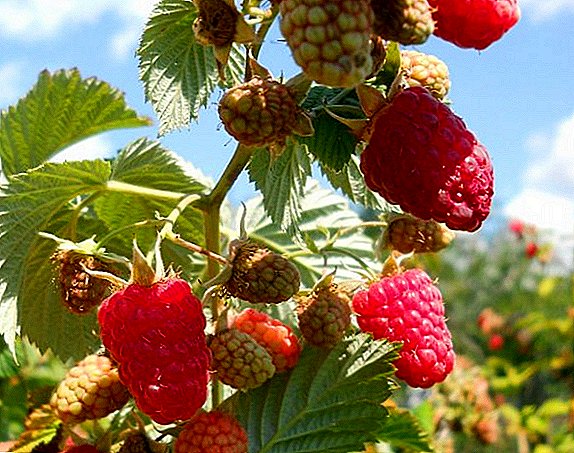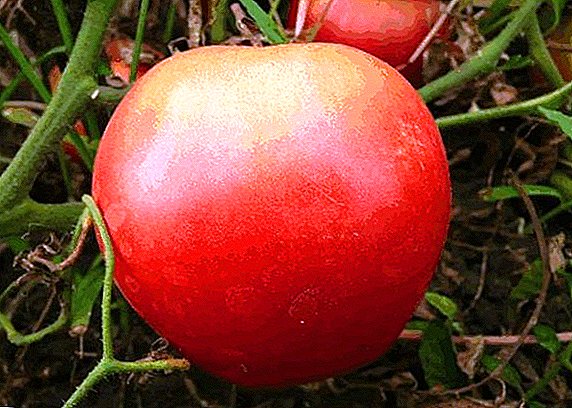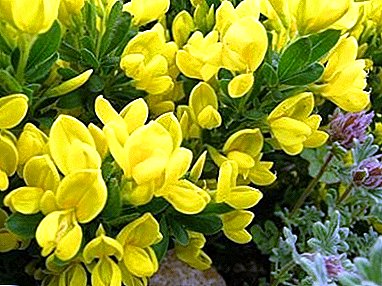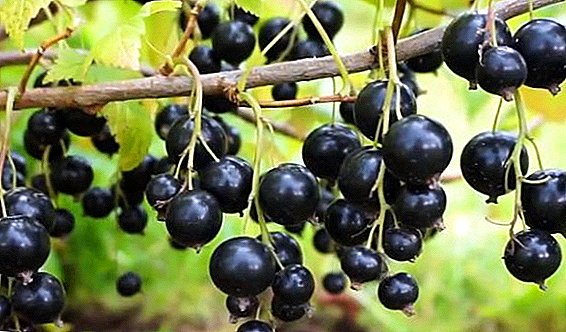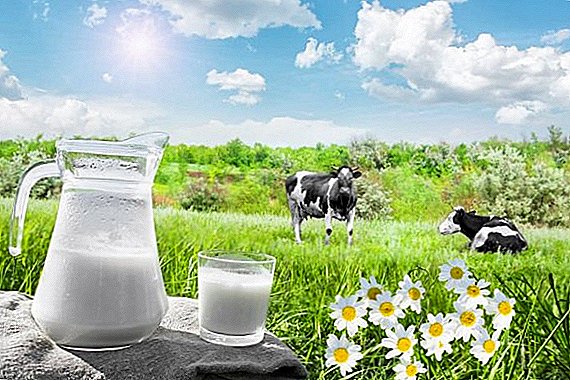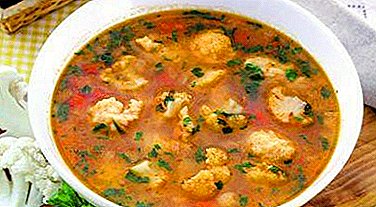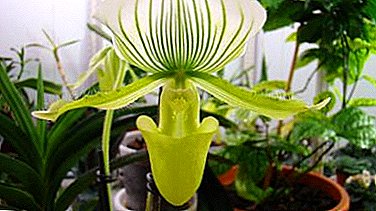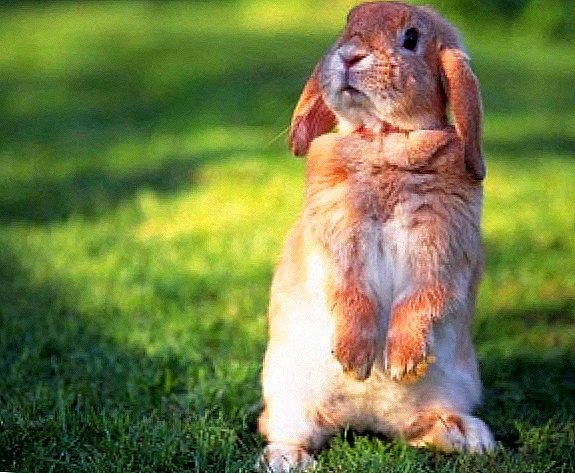
The first testimony of rabbits as pets was done a long time ago, back in ancient times. This was known in ancient Rome about 2000 years ago.
Breeding of these animals on an industrial scale began only 2 centuries ago.
Today, science knows about 700 breeds of rabbits, but every year this number increases due to various natural mutations or amateur crossbreeding of animals.
The classification of rabbits is based on the weight of the animal, the length of its fur, and also on productivity. It is not difficult to guess that those breeds that are bred for meat are called meat. It is about them that will be discussed.
Soviet chinchilla
This breed was created by the hands of livestock specialists from Novosibirsk and Saratov on the basis of the research institute of fur farming and rabbit breeding.
N.S. Zusman To create a new breed, white giants were bred with a chinchilla breed using reproductive mating.
Scientists wanted to get an animal with a large body weight, fluff of excellent quality, which is able to quickly adapt to a changing climate.

The Soviet chinchilla body in rabbits is slim and wide, the head is small, compared to the body, the ears are erect, of medium length. The coat is soft, shiny, of a bluish color. The belly, neck, tail and underside of the hips are white.
Because of the excellent qualities of the skins and their beautiful color, they are often used without modification.
An adult rabbit weighs, on average, 5 kg, the body reaches a length of 57-62 cm, and the girth of the chest is 37-38 cm. Fertility is good, the rabbit gives at least 8 rabbits in one okrol. The young growth is growing very actively, 120 days after birth, they can already gain 3.5-4 kg of live weight. Meat yield is 56-63%.
White giant

These animals have German-Belgian roots. This breed appeared in the distant 19th century.
Animals are long and carefully selected, and as a result they received purebred white giants.
These animals are large, their body is strong, elongated. Their back is straight and long, the thorax is well developed. The head is relatively small, ears short and erect.
The constitution of these animals is strong, typically mesosomal, but there are rabbits with a narrower body - this is the leptosome type. The fur is very thick, pure white, as these animals are albinos.
The average weight, characteristic of white giants, is set at 5-5.5 kg, but sometimes animals gain 8 kg. The body is long, 60-65 cm, girth in the chest - 37-38 cm.
For one okol female gives birth, on average, 7-8 rabbits. Young animals gain weight at an average rate. During the day the rabbit gives 170-220 g of milk. Mothers are good.
For white giants characterized by unpretentiousness. They quickly get used to the weather conditions of the area.
The white giant is widely used to create new breeds of rabbits because of its excellent physical qualities.
Silver rabbit

For the creation of a new breed, rabbits of the Champagne breed were subject to careful selection. In 1952, livestock specialists from the Tula and Poltava regions managed to breed a new breed. The number of “new” rabbits was greater than their predecessors. In addition, they were distinguished by better viability.
In appearance, these animals are compact, the body is wide, expanding closer to the hips. The head is small, the ears are erect, the chest is voluminous, the back is even, the croup is wide, slightly rounded.
The legs are strong, the muscles on them are well developed, set correctly. Eyes brown. The constitution of the mesosomal type, the body in length reaches 57 cm, and the girth of the sternum is approximately 36 cm. The average weight is 4.5 kg, sometimes it can reach up to 6 kg.
Fecundity is good, 8 rabbits at a time. Young animals are gaining weight at an accelerated pace, thanks to which they are turned up for meat slaughter. The meat comes out very tasty, tender. Young rabbits are well fed. From rabbits aged 120 days, you can get 57-61% of meat by weight.
The coat is thick, silver-gray color. The marginal hairs are white, the down is blue, and the guide hair is black.
Initially, rabbits are born black, after a month the fur begins to acquire a silvery shade. 4 months after birth, the color of the fur becomes the same as in adults.
It is better to keep animals of this breed under a canopy in light cells, as in the conditions of a closed space their productivity decreases, they begin to show aggression, and the young growth becomes not so viable.
The older the rabbit becomes, the more radically the color of the fur will change. Hair will either brighten or turn brown. After processing, the color of the skin is quite peculiar, besides, not very thick.
Viennese blue rabbit

These animals were bred in Austria from Moravian rabbits and Flandres. They are not too large, rather, medium size. The direction of the meat-sandpaper, but because of a decent weight they are often bred for meat slaughter.
The body is slender, oblong, the bones are strong, and the legs are well muscled. The constitution of the mesosomal type.
The average weight is 4.6 kg, the maximum weight is kept at 5 kg. The body is 57-58 cm long, and the girth of the sternum is 36 cm. The rabbit gives birth at a time, usually 8-9 rabbits, each weighing approximately 72 g.
The milkiness of the females is good, they are caring mothers. In 2 months of life, young animals gain weight in 1.7 kg, in 3 months - 2.6 kg, in 4 - 3 kg. Viennese blue rabbits endure strong weather changes, in the winter they can save young.
Skins from these animals are excellent, very beautiful colors. Pile is very soft due to the large amount of fluff. This material is widely used in both natural and processed form.
Rex Rabbit Breed

These animals have french roots. Were withdrawn in the 20th century, but on the territory of the current CIS came from Germany.
An adult animal is large - weighing 3-4.5 kg, with an oblong body 40-54 cm long. The body is not knocked down, of delicate construction, the bones are light and thin. The thorax is deep, but narrowed, there is a small dewlap.
The back is even with narrow croup. Legs are thin. Young animals gain weight at an average rate. For the first month of life, they gain 700 g, for the second - 1.7 kg, for the third - 2.2 kg.
By the time they reach the age of four months, the animals manage to gain 2.4 kg of weight. Rabbits are not particularly prolific, single offspring usually consists of 5 - 6 rabbits. Meat turns out dietary, very tasty, tender.
Valuable skins of these animals. Coloring can be very different - black, brown, white, blue. The size of the skins can also be different. Because of the small length of the hairs it seems that between the trimmed. In the color of these skins do not need.
Breed description "Butterfly"

This Belarusian breed was created by crossing the English butterfly rabbits with local individuals.
The bred offspring were crossed with Flandres, and their born animals were bred and a Belarusian butterfly. Due to the source material, the rabbit of this breed is able to produce large offspring (up to 8 rabbits) and a lot of milk.
The body of these animals reaches a length of 54 cm, and the girth of the chest is 36 cm.
The body is Eyrisomnogo type. The average weight is 4.3 kg, the maximum - 4.9 kg. The body structure is strong, the head is of medium size, the ears are of medium length. Chest volume, sometimes there is a decompression. The back is wide, oblong. The croup is wide, rounded.
Limbs strong, straight, muscular. Wool thick. The body is white, black, blue, chinchilla spots. The shape of the spots does not change: a symmetrical butterfly forms on the cheeks and nose, there is an intermittent belt on the back, there is also a bezel around the eyes, the top of the tail and ears of black color.
Rabbits of this breed are able to quickly get used to the climate of the area, they can be fed with local feeds.
California rabbit

From the name one can understand that America is the birthplace of these animals. On the territory of Europe were introduced in the 1970s. California rabbits can quickly get used to poor living conditions, and are also easily manufactured on an industrial scale.
Females of this breed very prolific and are excellent mothers, so the young are well preserved. The body of these animals is small, but weighty - 5.5-6 kg. Females begin to breed at 5 months of age, 9-10 rabbits can give birth at a time.
Rabbit meat of this breed is very tender and tasty. Can quickly gain weight, suitable for slaughter.
The muscles throughout the body of these rabbits are well developed, although the bones are thin and short. The neck is almost invisible, it is very short. Fur cover is very thick, rough, without down. The hair is white, glistening, the lower limbs, ears, tail and tip of the nose are very dark. Ears are small, stand straight.
Eyes of red and pink shades. Animals are calm, but active.
By the age of 2 months, small rabbits can weigh 1.8 kg, and the most fattened animals - all 2-2.3 kg. By three months, live weight can be 2.6-2.7 kg. Meat yield is 60%.
About bunnies "Flandr"

These Belgian animals appeared in the 19th century. Their bodies are long, strong bones.
The head is large, round shape. The ears are long and wide, diverging towards the end.
The sternum is well developed, the girth behind the shoulder blades is more than 37 cm. The back is wide, even, sometimes there is a small trough. The croup is wide. The body length is 67 cm or more.
The average weight of an adult male is 5.5 cm, and the maximum is 8-8.5 kg. Fertility is average, 6-7 rabbits can be born at a time. Newborn animal weighing 60-65 g. 4 months after birth, the weight is 2.1-3.3 kg.
Fur is a different color. If the animal is the color of agouti, but it has a reddish-gray body, the lower part of the tail and the stomach are white, the rim on the ears and the top of the tail are black. If the animal is dark gray, the guard hairs throughout the body are uniformly colored black and gray, the undercoat is dark blue, the belly is light.
It is also interesting to read about the best breeds of goats.
Thuringian rabbit

These animals belong to the meat-skin, but due to a decent weight of 3-5 kg are raised specifically for slaughter.
The meat is very tasty, healthy, and the skin is very soft and beautiful. The homeland of animals is German Thuringia, and they appeared in the early 20th century.
To breed a new breed, Russian ermine rabbits, argent and flandry were crossed.
Body knocked down, tight, shortened neck, legs with a large number of muscles, medium in length. The coat is light brown in color, and there is a black veil on the nose, hips, ears, and sides.
The fur is shiny, very smooth to the touch. Color may vary throughout the year.
Breed "Black-brown"

The wool of these animals is dark brown in color, from which the name of the breed originated. In general, the coat color is very patchy. On the sides of the coat is black-brown, on the head and back is black.
The down is light blue, the guard hair is gray-blue. To breed this breed in the middle of the 20th century, Flandre, the White giant and the Vienna pigeon were crossed.
Animals are characterized high productivity, actively gaining weight, mid-season. Wool and meat of high quality.
The average weight is 5 kg, but often the crawl can eat 7 kg. The body is downed, strong, the head is large, the sternum is voluminous, the limbs are oblong, fleshy.
Small rabbits weigh about 80 g, and at three months of age - already 3 kg. The female at a time gives 7-8 rabbits. The fur is soft due to the large amount of fluff.
New Zealand White Rabbits

The dimensions of these animals are medium, the wool is pure white.
These albinos were selected from red New Zealand rabbits in America in the first half of the 20th century. The subsequent selection was aimed at the selection of more intensive growth, obtaining more high-quality meat.
In order to get a bigger meat output, selected individuals were crossed with Flandres.
They acclimatize well. The weight of an adult crawl varies between 4 and 5 kg. The body constitution is strong, the body is proportional, short, the musculature is well developed, the back is wide, and the legs are strong.
The youngsters very quickly eat up the mass, which is what characterizes this breed. For 2 months, rabbits, which are born in a weight of 45 g, reach 2 kg, and 3 months after birth, they weigh 2.7–3 kg.
The meat is low-calorie due to the highly developed muscles. The fur is of the same quality as the meat. The coat is thick, white. Females give birth to 7 to 12 rabbits at a time. Often the rabbits of this breed are raised as broiler animals.
It is better to grow the rabbits yourself to get good meat than to buy it in the store. So you will know that in the meat product there are no antibiotics and other chemicals that can only cause harm.


